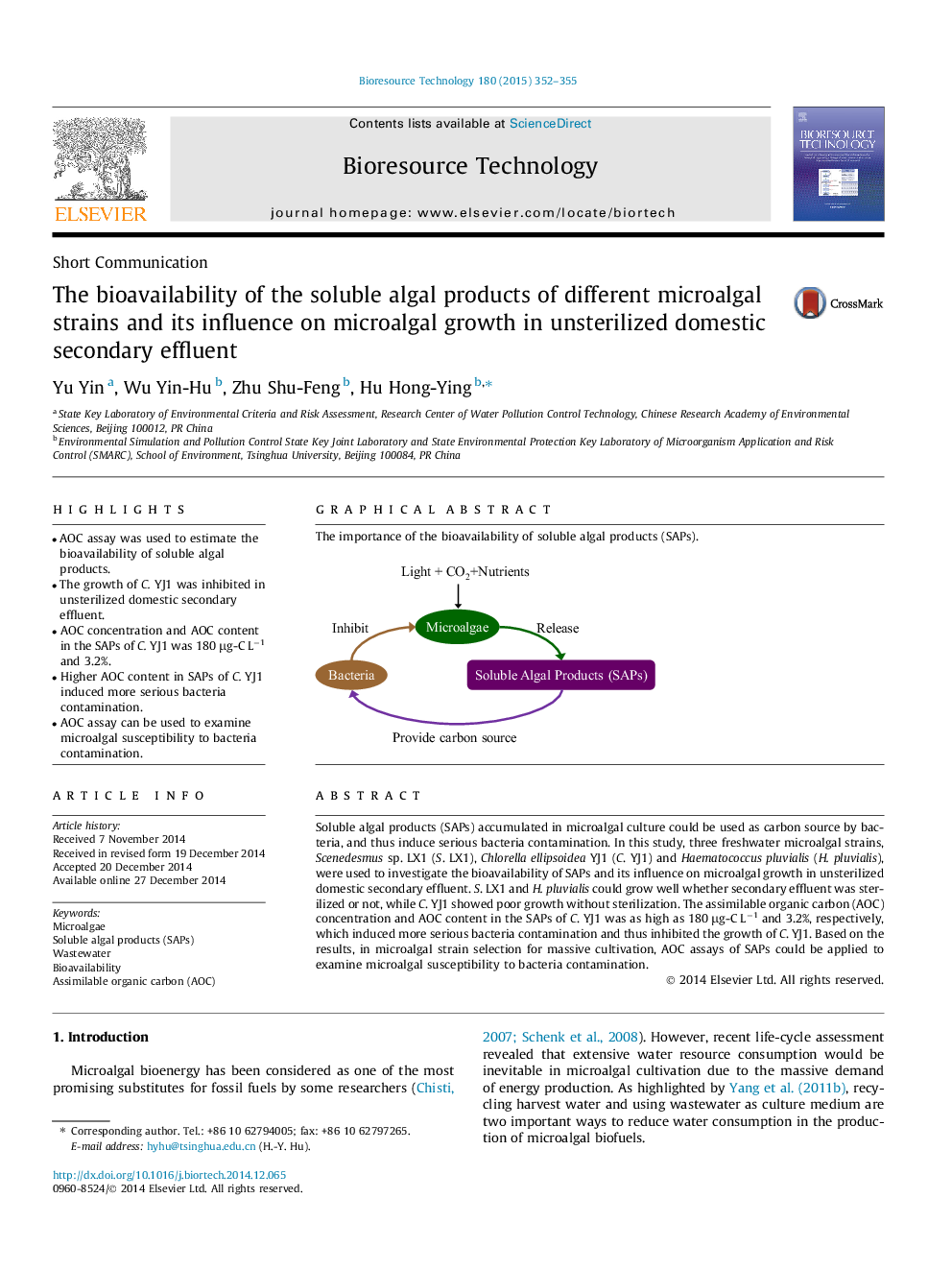| Article ID | Journal | Published Year | Pages | File Type |
|---|---|---|---|---|
| 680054 | Bioresource Technology | 2015 | 4 Pages |
•AOC assay was used to estimate the bioavailability of soluble algal products.•The growth of C. YJ1 was inhibited in unsterilized domestic secondary effluent.•AOC concentration and AOC content in the SAPs of C. YJ1 was 180 μg-C L−1 and 3.2%.•Higher AOC content in SAPs of C. YJ1 induced more serious bacteria contamination.•AOC assay can be used to examine microalgal susceptibility to bacteria contamination.
Soluble algal products (SAPs) accumulated in microalgal culture could be used as carbon source by bacteria, and thus induce serious bacteria contamination. In this study, three freshwater microalgal strains, Scenedesmus sp. LX1 (S. LX1), Chlorella ellipsoidea YJ1 (C. YJ1) and Haematococcus pluvialis (H. pluvialis), were used to investigate the bioavailability of SAPs and its influence on microalgal growth in unsterilized domestic secondary effluent. S. LX1 and H. pluvialis could grow well whether secondary effluent was sterilized or not, while C. YJ1 showed poor growth without sterilization. The assimilable organic carbon (AOC) concentration and AOC content in the SAPs of C. YJ1 was as high as 180 μg-C L−1 and 3.2%, respectively, which induced more serious bacteria contamination and thus inhibited the growth of C. YJ1. Based on the results, in microalgal strain selection for massive cultivation, AOC assays of SAPs could be applied to examine microalgal susceptibility to bacteria contamination.
Graphical abstractThe importance of the bioavailability of soluble algal products (SAPs).Figure optionsDownload full-size imageDownload as PowerPoint slide
